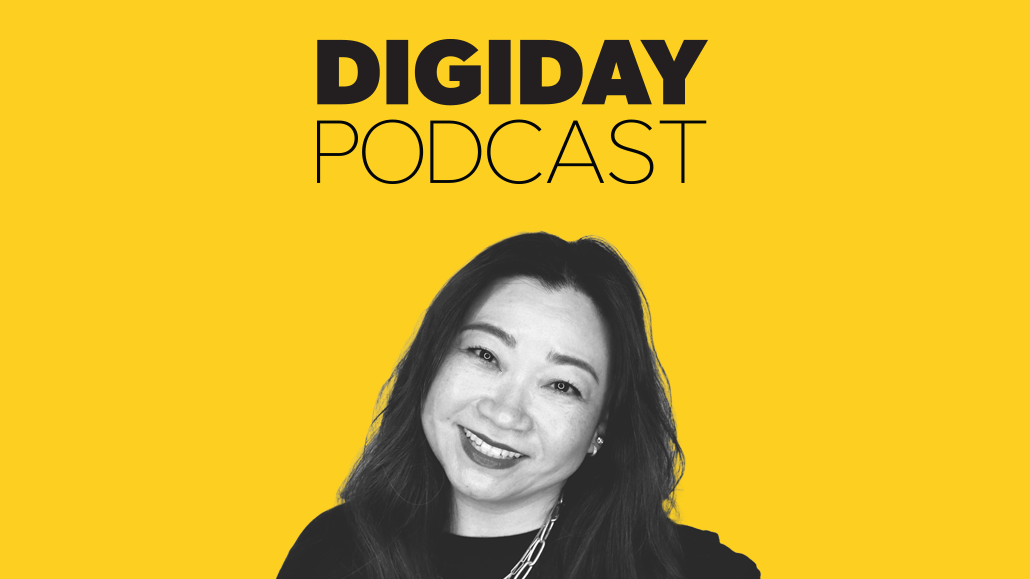Register by Jan 13 to save on passes and connect with marketers from Uber, Bose and more
Why entertainment expert Eunice Shin is watching streamers’ subscriber churn rates

Subscribe: Apple Podcasts • Spotify
Earnings season is officially under way, and Eunice Shin has her eye on streaming service owners’ abilities to retain their subscribers.
“In a world where economic uncertainties still exist, where the quality of content continues to be hits-based and a lot of bombs, how are we thinking about churn and how are these streaming platforms keeping the customers they’ve worked so hard to gain in an increasingly competitive and price-competitive world?” said Shin, a partner at strategy consulting firm Prophet who has consulted for companies including Disney, Warner Bros. and NBCUniversal, in the latest episode of the Digiday Podcast.
It’s a big question, made all the more urgent considering the streaming market’s shift in emphasis from subscriber growth to profitability. Following the pandemic-induced streaming subscriber surge, that growth started to slow in 2021 and further in 2022, to the point that Netflix actually shed subscribers. Then, with the economic downturn and looming threat of a potential recession, investors’ pivoted their attentions to how much money companies are spending — and often, losing — on their streaming businesses, questioning whether streamers’ subscriber counts justified their programming costs.
Which is why Shin is keeping vigil on streamers’ subscriber churn rates.
“If you think about all of these streamers as they’ve launched — most of them during the pandemic — as people have spent a lot of money to acquire these customers, meaning not just marketing dollars but content dollars in content investments to be able to lure people onto those platforms, how are they doing in keeping them…. As much as you think about subscriber growth, if your churn number is high, it’s like one step forward, two steps back,” she said.
Here are a few highlights from the conversation, which have been edited for length and clarity.
Combating churn
That’s been Netflix’s strategy this whole time about giving you a sense of volume. Once you’re watching “Emily in Paris,” what’s next and what gets served up to you is super important to know, “Am I coming back to tomorrow or am I going to feel like I don’t need this streaming platform this month?”
The ideal churn rate
Everyone’s always been trying to get it at less than 5%. That’s the ideal state.
Streaming’s rebundling era
We’re moving into a world quickly of aggregation again. Everything we saw in the cable world before now I think we’re going to find ourselves in a streaming aggregation world where there’s going to be, “How do we show incremental value to consumers by signing up for something a little bit more expensive but that gets you more?”
The free, ad-supported streaming TV alternative? Not so FAST
I don’t know if this is throwing too strong of a dagger, but I think the [free, ad-supported streaming TV] services are only resonating with a certain amount of generations in our population. If you were to look at Gen Z behaviors, none of them are turning on Pluto [TV] to watch old reruns of “Gilligan’s Island” or whatever it may be. That type of content doesn’t resonate.
More in Future of TV

‘A year of loose ends’: Digiday editors share top takeaways from 2025
This year was filled with major developments – from Netflix’s planned WBD deal to Omnicom’s acquisition of IPG to Google’s ultimately cookie reversal – and Digiday editors Sara Jerde and Seb Joseph help to recap the year that was (and wasn’t).

Future of TV Briefing: How the future of TV shaped up in 2025
This week’s Future of TV Briefing looks back at the top topics and trends that overtook the TV, streaming and digital video industries in 2025.

Programmatic agency execs speak out on CTV transparency
At the recent Digiday Programmatic Marketing Summit, agency executives spoke out — on stage and in behind-closed-door town hall sessions — on how they see transparency in CTV.








